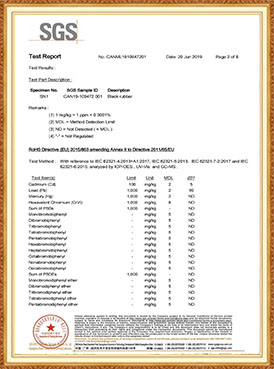

The Cost of Building a Padel Court A Comprehensive Guide
Padel, a racquet sport that combines elements of tennis and squash, has rapidly gained popularity across the globe. As more players and enthusiasts seek out venues to enjoy this exciting game, the demand for padel courts has surged. One of the most pressing questions for avid players and potential investors is how much does it cost to build a padel court? This article aims to provide an in-depth look at the various factors influencing the cost of constructing a padel court, ensuring that you have a comprehensive understanding before embarking on this project.
1. Understanding the Basics of Padel Courts
Before delving into costs, it's essential to know the basic requirements for a padel court. A standard padel court is enclosed and measures 20 meters long by 10 meters wide. The height of the walls must be at least 3 meters and can reach up to 4 meters in specific areas to allow for more flexibility during play. The court is usually made of artificial grass, though other surfaces like concrete and wood are also viable options.
2. Location and Land Costs
The first major expense in building a padel court is the land on which it will be constructed. Depending on the location—urban, suburban, or rural—land prices can vary dramatically. Urban areas typically command higher real estate prices, which can significantly inflate the overall budget. Additionally, site preparation costs, such as leveling the ground and ensuring proper drainage, can add to the initial expenses.
3. Construction and Materials Costs
Once you have secured a location, the next step is procuring the necessary materials and constructing the court itself
. Here are some main components and their associated costs- Frame and Walls The structure of the court typically includes tempered glass walls and a metal frame. The costs for this can range between $15,000 to $30,000, depending on size and quality. - Surface Material The choice of surface is crucial for playability. Artificial turf is the most commonly used material, costing between $15,000 to $25,000. Additionally, installing a shock-absorbent layer beneath the turf can further elevate costs. - Lighting and Amenities If you intend to play at night, investing in proper lighting is essential. High-quality LED lights can cost between $5,000 to $10,000. Other amenities like benches, nets, and fences can add another $2,000 to $5,000 to the overall expenses. 4. Labor Costs

Labor costs can also vary based on geographical location and the complexity of the construction project. On average, hiring contractors for padel court construction can range from $10,000 to $20,000. It's vital to work with experienced contractors familiar with sports facility construction to ensure your court meets all regulations and standards.
5. Permits and Legal Fees
Building a padel court often requires various permits and adherence to local zoning laws. The cost of these permits can range from $1,000 to $5,000, depending on your location. It is important to factor in these costs and consult with a local authority to avoid potential legal issues down the line.
6. Maintenance Costs
Once your padel court is up and running, ongoing maintenance is essential to keep it in top condition. Regular maintenance costs, including cleaning, repairs, and resurfacing of the court, can amount to around $1,000 to $2,500 annually.
7. Total Investment and Return on Investment
In summary, the total cost to build a padel court can range from $50,000 to $100,000 or more, depending on the factors discussed. While this may seem like a significant investment, the increasing popularity of padel presents a potential for a good return on investment, especially if you plan to run a commercial venue or club.
Conclusion
Building a padel court is undoubtedly an investment, but it can provide immense satisfaction and community engagement. By carefully considering location, materials, labor, and maintenance costs, you can develop a fully functional padel court that meets your needs. With the sport’s popularity on the rise, investing in a padel court may well be a step towards fostering a vibrant sporting community. Whether for personal enjoyment or commercial endeavor, understanding the costs involved can help ensure your project’s success.
High-Performance Industrial Flooring Solutions China Paddle Tennis Court for Sale
High-Performance Industrial Flooring Solutions Durable & Cost-Effective
Homogeneous Transparent Floor – Durable & Stylish Rubber Floor Solutions
Premium Homogeneous Transparent Floor for Durable & Stylish Spaces Rubber Floor Solutions
Premium Sports Floor Solutions Durable PVC Sports Floor & Rubber Floor for Gyms
Durable Rubber Composite Floor Premium Rubber Floor & Mats Solutions